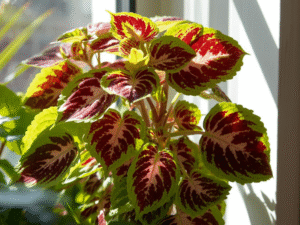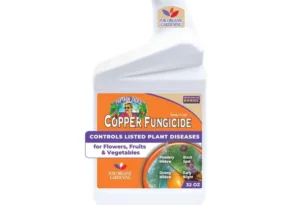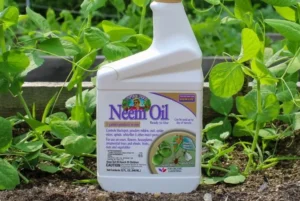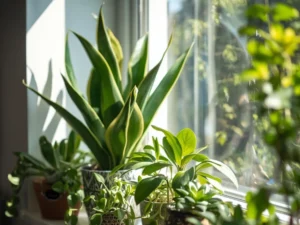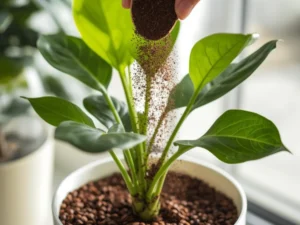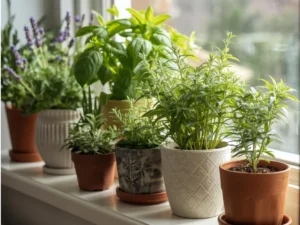When it comes to organic gardening, choosing the right disease control method can make or break your plants’ health. Many gardeners debate neem oil vs copper fungicide, wondering which works better for pests and fungal diseases.
Both are widely used, but they function differently and suit distinct situations. Understanding how each works will help you make smarter, more sustainable gardening choices.
What Is Neem Oil?
Neem oil is a natural extract from the seeds of the neem tree (Azadirachta indica). For centuries, it’s been valued in traditional agriculture and medicine for its antifungal, antibacterial, and insecticidal properties.
Unlike synthetic pesticides, neem oil works gently but effectively. It interferes with insect hormone systems, preventing pests like aphids, whiteflies, and spider mites from feeding or reproducing.
Moreover, neem oil acts as a fungicide, preventing common diseases such as powdery mildew, black spot, and rust. Because it’s organic and biodegradable, it’s a favorite among eco-conscious gardeners.
What Is Copper Fungicide?
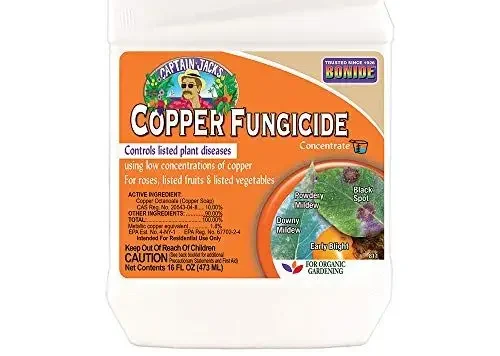
Copper fungicide, on the other hand, is a mineral-based chemical compound made from copper ions that disrupt fungal cell structures. It has been used for centuries to combat fungal and bacterial diseases.
While highly effective, copper fungicides can accumulate in soil over time, potentially affecting beneficial microorganisms. Therefore, it’s often used sparingly in sustainable gardening practices.
Copper fungicide works best as a preventive treatment. It coats plant surfaces, forming a barrier that kills pathogens before they penetrate plant tissues.
Neem Oil vs Copper Fungicide: Key Differences
1. Composition and Source
Neem oil is plant-based and natural, while copper fungicide is inorganic and mineral-derived.
This fundamental difference influences how they behave in the environment. Neem oil breaks down quickly, leaving minimal residue, whereas copper can persist longer in soil.
2. Mode of Action
Neem oil affects pests’ hormonal and feeding behavior, gradually reducing infestations. Copper fungicide, however, directly kills fungi and bacteria by damaging their cells.
Thus, neem oil offers both insecticidal and fungicidal benefits, whereas copper primarily targets fungal diseases.
3. Safety and Environmental Impact
Neem oil is safer for beneficial insects like bees and ladybugs when applied correctly. Copper fungicide, while effective, can harm beneficial soil microbes if overused.
For long-term soil health, neem oil is the more eco-friendly choice.
Effectiveness: Which One Works Better?
The answer depends on your specific problem.
Neem oil is best for controlling soft-bodied insects and mild fungal issues. It also boosts plant immunity, making it an excellent all-rounder for organic gardens.
Copper fungicide, however, is more effective against severe fungal and bacterial diseases such as blight, leaf spot, and downy mildew.
If your garden frequently faces fungal infections, copper may be your stronger line of defense. However, if you aim for a preventive, multipurpose treatment, neem oil is ideal.
When to Use Neem Oil

Neem oil should be applied early in the morning or late in the evening to prevent leaf burn. It’s most effective when used as a preventive spray or at the first signs of pest activity.
Mix 1–2 tablespoons of neem oil with a gallon of water and a few drops of mild soap. Spray evenly on leaves, including the undersides.
Consistency is key — apply every 7 to 14 days for lasting protection.
For more information on sustainable pest control, visit trusted agricultural resources like EPA’s guide on biopesticides.
When to Use Copper Fungicide
Copper fungicide works best before a fungal outbreak begins. Apply it during humid or rainy seasons when diseases are likely to spread.
Make sure to cover the entire plant surface, especially new growth. Avoid excessive use since copper can build up in soil.
Also, never mix copper fungicide with other sprays unless specified — the combination may reduce its effectiveness.
Advantages of Neem Oil
-
Organic and biodegradable
-
Safe for pollinators when applied properly
-
Controls both pests and fungi
-
Improves overall plant resistance
-
Non-toxic to humans and pets
Because neem oil disrupts the insect life cycle, it provides long-term control without damaging your ecosystem.
Advantages of Copper Fungicide
-
Highly effective against severe fungal diseases
-
Works well in damp, humid conditions
-
Provides protective coating to prevent reinfection
-
Long shelf life and easy application
For commercial farms and large gardens with recurring fungal outbreaks, copper fungicide remains a dependable option.
Can You Use Neem Oil and Copper Fungicide Together?
While both are effective, combining them isn’t always recommended. The chemical reaction between copper and neem oil can reduce their individual effectiveness and even cause leaf burn.
Instead, alternate between them for example, use neem oil one week and copper fungicide the next if you’re battling multiple plant issues.
Always follow manufacturer instructions carefully and perform a patch test before widespread application.
Environmental Considerations
As the world moves toward sustainable gardening, neem oil stands out as a safer, eco-friendly choice. It breaks down within days and doesn’t pollute soil or water sources. For homeowners who value natural beauty and sustainability, exploring Martha Stewart home decor ideas can complement the same eco-conscious lifestyle both indoors and outdoors.
Copper fungicide, though natural in origin, can accumulate over time. Hence, it’s best used occasionally or under severe disease pressure.
Gardeners aiming for long-term soil fertility often prefer neem oil for maintenance and copper fungicide for emergency treatment.
Neem Oil vs Copper Fungicide: The Verdict
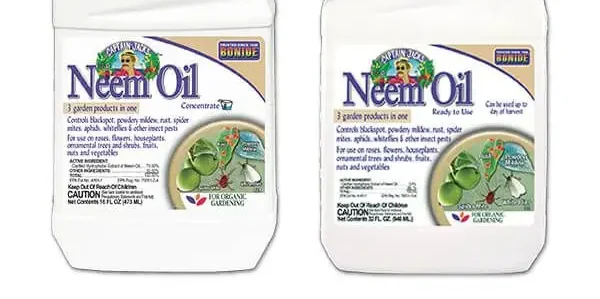
In the neem oil vs copper fungicide debate, there isn’t a one-size-fits-all answer.
If you’re looking for an eco-friendly, preventive, and multipurpose solution, neem oil is your go-to choice.
However, if your plants are suffering from serious fungal infections, copper fungicide can provide the quick and powerful protection you need.
Ultimately, understanding when and how to use each will ensure healthier, more resilient plants year-round.
FAQs
1. Can I use neem oil after applying copper fungicide?
It’s best to wait at least 7–10 days before applying neem oil after using copper fungicide to prevent phytotoxic reactions.
2. Is neem oil completely safe for all plants?
Neem oil is safe for most plants, but sensitive species like ferns or succulents may show minor leaf burn if over-applied. Always test a small area first.
3. How often should I apply copper fungicide?
Apply copper fungicide once every 10–14 days or as directed on the label, especially during humid weather.
4. Can I use neem oil on edible plants?
Yes, neem oil is safe for edible plants. However, wash fruits and vegetables thoroughly before consumption.
5. Which is more cost-effective: neem oil or copper fungicide?
Neem oil is generally cheaper for small-scale use, while copper fungicide may be more economical for large farms facing persistent fungal issues.
Conclusion
To sum up, both neem oil and copper fungicide play crucial roles in disease management. Neem oil supports sustainable gardening with its eco-friendly benefits, while copper fungicide offers unmatched power against serious fungal threats.
Interestingly, neem oil’s benefits extend beyond plant care; it’s also effective for pest control in other areas. For example, it can help manage household pests safely, as explained in this guide on will neem oil kill fleas.
By using them wisely and responsibly, you can create a balanced approach that protects your garden naturally and effectively, ensuring lush, healthy growth season after season.



